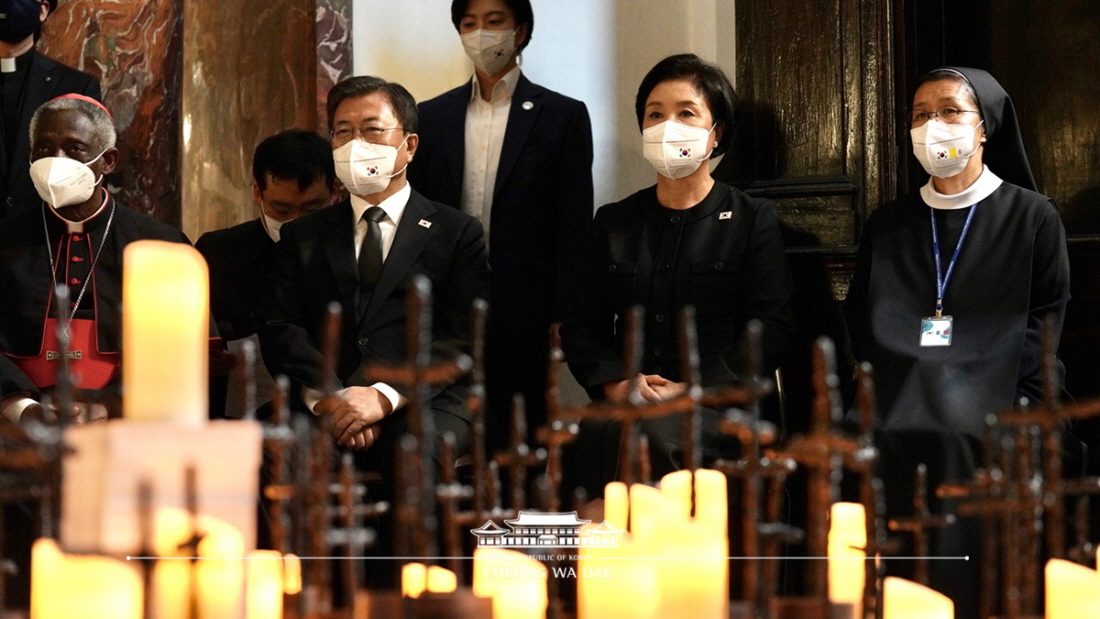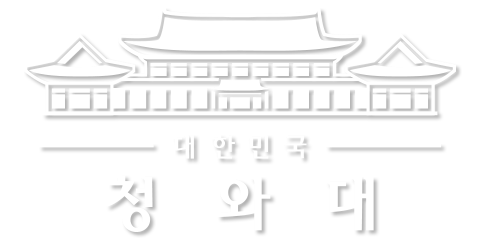이 웹사이트는 제19대 대통령 임기 종료에 따라 대통령기록관이 「대통령기록물 관리에 관한 법률」에 의해 이관받아 서비스하는 대통령기록물입니다. 자료의 열람만 가능하며 수정 · 추가 · 삭제는 불가능합니다.
다만, 「개인정보보호법」에 의하여 개인의 정보를 보호받기 원하시는 분은 관련 내용(요청자, 요청내용, 연락처, 글위치)을 대통령 웹기록물 담당자(044-211-2253)에게 요청해 주시면 신속히 검토하여 조치해 드리겠습니다. 감사합니다.
SPEECHES & REMARKS
BRIEFINGS
Remarks by President Moon Jae-in at Exhibition “Barbed Wire, Heralds of Peace” in Rome

Today’s “crosses of peace” project has been planned and organized by Chairperson Park Yong-man of the Path with You Foundation. Until recently, he served as the CEO of one of Korea’s largest companies and represented all businesses as Chairman of the Korean Chamber of Commerce and Industry.
Before this, Chairperson Park once worked on a special project featuring crosses. In the traditional Korean markets of the past, laborers on the lowest rung of society used to eke out a living by delivering goods on handcarts. To be able to carry more, they’d add planks to those handcarts to make them bigger. They called these “gureuma.” As markets modernized, those gureuma carts became obsolete. Chairperson Park took decades-old worn, wooden gureuma planks that had been discarded but were steeped in the sweat, tears and suffering of countless laborers and turned them into crosses. I called those crosses – the burdens of the most destitute labor – the most beautiful crosses in the world.
The crosses of peace exhibited this time are all the more meaningful. Immeasurable strands of barbed wire are installed along the 250 km-long Military Demarcation Line inside the Demilitarized Zone that cuts across the Korean Peninsula and divides it into the South and the North. As you know, the barbs on the wire are attached very close to one another and have very sharp edges.
As a line that keeps people from coming and going, barbed wire symbolizes hostility and confrontation. Following the inauguration of my Administration, dialogue between the two Koreas resumed; military agreements were reached; and the South and North agreed to stop acts of hostility – significantly easing military tensions and promoting peace to this extent. As a result, my Administration removed some stretches of the barbed wire, and that rusty barbed wire has been transformed into these beautiful crosses of peace.
A Bible verse mentions beating swords into plowshares to symbolize turning from war to peace. In addition to that meaning, the crosses today now contain the desire of many separated families in both Koreas to return to hometowns and meet relatives. They also hold the earnest wish and prayer of the people of the Republic of Korea to end the war for good and for the two Koreas to live in peace from this time forth.
Please imagine this: If the barbed wire along the Military Demarcation Line and DMZ is removed, and the war between the two Koreas is permanently ended, international organizations in both Koreas could relocate their offices there. U.N. peace organizations could set up headquarters there and the two Koreas establish liaison offices. By doing so, the now barbed wire-filled DMZ could be transformed into a truly international peace zone.
I am grateful to Chairperson Park Yong-man and Professor Kwon Dae-hoon for making this beautiful art work – the embodiment of the end-of-the-war declaration that I called for at the last U.N. General Assembly. My gratitude goes out to everyone here for joining us.
Thank you.



